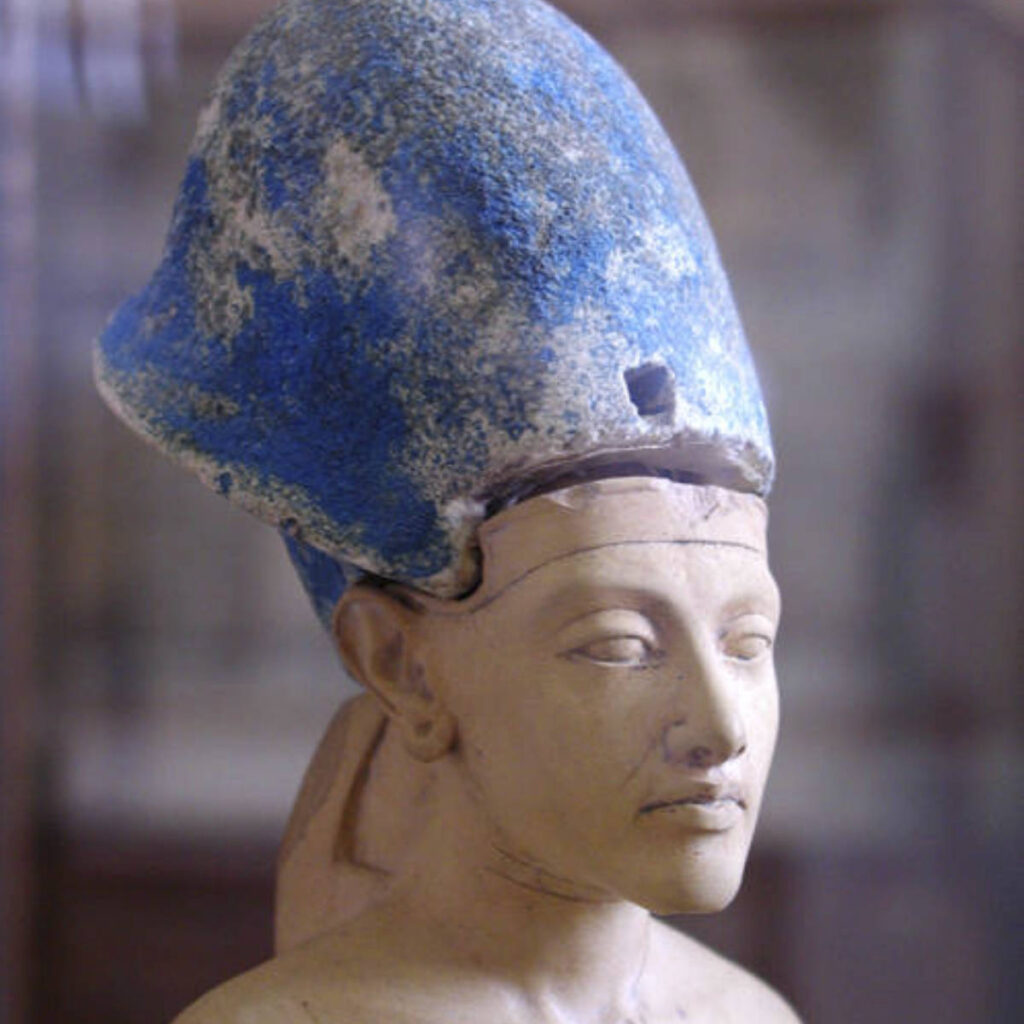Last Reviewed and Updated on August 1, 2022
Akhenaten is the Ancient Egyptian pharaoh of the 18th dynasty. He is often regarded as the “heretic king” because of his religious reform but is also considered to be one of the most important pharaohs in ancient Egypt. Read through these 10 interesting facts about Akhenaten, a pharaoh that was almost erased from history.

1. He is the father of Tutankhamun
Akhenaten is most likely the father of one of the most recognized pharaohs of Ancient Egypt. He may have had 9 children.
Tutankhamun (King Tut) is most likely the son of Akhenaten. This is based on genetic testing and archeological evidence.
2. Akhenaten was the first pharoah to introduce monotheism
This is one of the most important and interesting facts about Akhenaten. When you think about the religion of Ancient Egypt, polytheism is what usually comes to mind. The likes of Osiris, Anubis, Ra, and Horus come to mind as well as numerous other deities.
He abandoned polytheism and most likely introduced monotheism. It is possible some other deities were also still worshiped, so it might not have been an absolute monotheism.
The most notable difference in his religion was that he considered himself the son of God instead of being the embodiment of the god Horus (like other pharaohs claimed to be).
3. His worship was centered around Aten
Akhenaten abandoned the deities traditionally worshiped by the Ancient Egyptians and introduced a new religion, Atenism, a belief centered around a single deity Aten (Aton). Aten was the disc of the Sun. This deity was praised as the creator, giver, and nurturer of life in Atenism.
4. He changed his name to demonstrate his worship
His birth name was Amenhotep IV. He ascended to the throne under this name. He later changed his name to Akhenaten, reflecting his worship of Aten. The name means something along the lines of “beneficial to Aten”.
5. After his death, Ancient Egyptians reverted back to polytheism
His (likely) son Tutankhamun reinstated the polytheistic religion centered around the god Amun. This can be seen by his name change. Tutankhamun was given the name Tutankhaten. The Aten part of the name was changed to Amun.
The Atenism monotheistic religion wasn’t eradicated under his rule though, but would later be.
6. Other pharaohs excluded his name from the list of rulers
Pharaohs that came after Akhenaten and his son were not in favor of him and his beliefs. His monuments were dismantled and hidden, his statues were destroyed and his name was excluded from the historic lists of rulers compiled by pharaohs. He was considered the enemy and noted as such in archival records. They really didn’t like his ways.
This made this pharaoh lost to the history for a long time.
7. His wife was Nefertiti
One of the most well-known queens of Ancient Egypt, Nefertiti, was the great royal wife of Akhenaten. It’s believed she may have ruled briefly after the death of her husband.
8. Akhenaten founded a new capital Akhetaten (today Amarna)
Following his name change, he issued a decree that a new capital city be built. At that time Thebes was the capital. He chose an uninhabited site between Thebes and Memphis for this new city. It isn’t known why he choose to establish a new capital and left the old one.
9. He ruled for 17 years
Considering there were at least about 170 pharaohs who ruled for about 2500 years, this puts him above average. Not bad at all.
10. He probably suffered from some genetic disorder
Last in our list of facts about Akhenaten is his health. When it comes to the portrayal of pharaohs, you will mostly see them as portrayed as athletic. Akhenaten on the other hand had a more feminine appearance and an elongated jaw. This leads the archeologist to believe he may have suffered from some sort of genetic condition.
